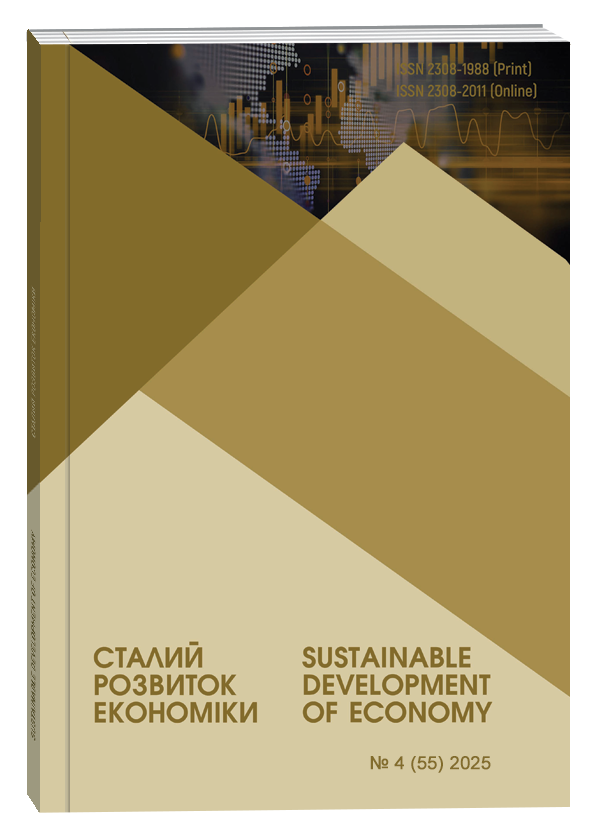APPLYING AN INTEGRATED MULTI-CRITERIA AHP–TOPSIS METHODOLOGY FOR PROJECT SELECTION IN IT OUTSOURCING COMPANIES
Abstract
This paper presents an integrated AHP–TOPSIS method for project selection in IT outsourcing, where each engagement both generates revenue and shapes capabilities. We operationalize five pillars—financial attractiveness, resource feasibility, strategic alignment, risk profile, and competence synergy—on a common scale, combining expert judgments with quantitative data. Financials include expected NPV and target margin adjusted for tail risk via CVaR; resources reflect total effort and the load on critical roles; strategic alignment covers roadmap support and access to new markets; risk spans technical, contractual, and regulatory exposures; competence synergy quantifies reinforcement or extension of core skills. Weights are derived via AHP with consistency checks and then applied in TOPSIS to compute closeness to positive and negative ideal solutions. A realistic simulated portfolio (USD 100–300k contracts; market billing rates) evaluates four projects on ten subcriteria. Results prioritize options with moderate NPV, low CVaR, and strong competence synergy, while resource-intensive projects with weaker strategic fit are penalized despite higher gross returns. Sensitivity tests show that top ranks remain stable under plausible weight variations, indicating robustness for group decision making. Managerially, the framework speeds evidence-based portfolio decisions, reduces ad-hoc bias, limits portfolio drift, and aligns intake with long-term capability building. A decideXpert implementation enables parallel expert input and automatic consistency feedback, improving reproducibility and governance. The contribution is a practical adaptation of established MCDM techniques to the service context with explicit treatment of tail risk and competence effects. Limitations concern the scale of the illustration and static inputs; future research should extend datasets across firms and add fuzzy and learning-based weight updates to capture uncertainty and dynamics. We also detail implementation parameters—normalization choice, benefit/cost handling, aggregation rules, and reporting templates—to facilitate replication in corporate settings and auditing of decisions.
References
Lacity M. C., Khan S. A., Willcocks L. P. A review of the IT outsourcing literature: Insights for practice. Journal of Strategic Information Systems, 2009. Vol. 18. No. 3. P. 130–146. DOI: https://doi.org/10.1016/j.jsis.2009.06.002.
Статистична інформація Національного Банку України. URL: https://bank.gov.ua/files/ES/BOP_y.pdf (дата звернення: 09.09.2024).
Archer N. P., Ghasemzadeh F. An integrated framework for project portfolio selection. International Journal of Project Management. 1999. Vol. 17. No. 4. P. 207–216. DOI: https://doi.org/10.1016/S0263-7863(98)00032-5.
Cooper R. G., Edgett S. J., Kleinschmidt E. J. Portfolio management for new product development: Results of an industry practices study. R&D Management, 2001. Vol. 31. No. 4. P. 361–380. DOI: https://doi.org/10.1111/1467-9310.00225.
Prahalad C. K., Hamel G. The core competence of the corporation. In: Strategic Management: Competitiveness and Globalization. 1990. DOI: https://doi.org/10.1016/B978-0-7506-7223-8.50003-4.
Chiang I. R., Núñez M. A. Strategic alignment and value maximization for IT project portfolios. Information Technology & Management, 2013. Vol. 14. No. 2. P. 143–157. DOI: https://doi.org/10.1007/s10799-012-0126-9.
Mim J. F., Asadujjaman M. A. Project selection criteria: A review of literature from the last 20 years. Business Analytics, 2024. Vol. 7. Article 0065. DOI: https://doi.org/10.46254/BA07.20240065.
Wang Z. H., Esangbedo M. O., Bai S. Project portfolio selection based on multi-project synergy. Journal of Industrial and Management Optimization, 2023. Vol. 19, No. 1. DOI: https://doi.org/10.3934/jimo.2021177.
Dixit V., Tiwari M. K. Project portfolio selection and scheduling optimization based on risk measure: A conditional value at risk approach. Annals of Operations Research, 2020. Vol. 285, No. 1–2. P. 9–33. DOI: https://doi.org/10.1007/s10479-019-03214-1.
Behzadian M., Otaghsara S. K., Yazdani M., Ignatius J. A state-of-the-art survey of TOPSIS applications. Expert Systems with Applications, 2012. Vol. 39. No. 17. P. 13051–13069. DOI: https://doi.org/10.1016/j.eswa.2012.05.056.
Saaty T. L. Decision making with the analytic hierarchy process. International Journal of Services Sciences, 2008. Vol. 1. No. 1. P. 83–98. DOI: https://doi.org/10.1504/IJSSCI.2008.017590.
Shih H.-S., Shyur H.-J., Lee E. S. An extension of TOPSIS for group decision making. Mathematical and Computer Modelling, 2007. Vol. 45. No. 7–8. P. 801–813. DOI: https://doi.org/10.1016/j.mcm.2006.03.023.
Saoud A., Lachgar M., Hanine M., та ін. decideXpert: Collaborative system using AHP–TOPSIS and fuzzy techniques for multicriteria group decision-making. SoftwareX. 2025. Vol. 29. Article 102026. DOI: https://doi.org/10.1016/j.softx.2024.102026.
Lacity M. C., Khan S. A., Willcocks L. P. (2009). A review of the IT outsourcing literature: Insights for practice. Journal of Strategic Information Systems, vol. 18(3), pp. 130–146. DOI: https://doi.org/10.1016/j.jsis.2009.06.002
Statystychna informatsiia Natsionalnoho Banku Ukrainy [Statistical information of the National Bank of Ukraine]. Available at: https://bank.gov.ua/files/ES/BOP_y.pdf (дата звернення: 09.09.2024).
Archer N. P., Ghasemzadeh F. (1999). An integrated framework for project portfolio selection. International Journal of Project Management, vol. 17(4), pp. 207–216. DOI: https://doi.org/10.1016/S0263-7863(98)00032-5
Cooper R. G., Edgett S. J., Kleinschmidt E. J. (2001). Portfolio management for new product development: Results of an industry practices study. R&D Management, vol. 31(4), pp. 361–380. DOI: https://doi.org/10.1111/1467-9310.00225
Prahalad C. K., Hamel G. (1990). The core competence of the corporation. In Strategic Management: Competitiveness and Globalization. DOI: https://doi.org/10.1016/B978-0-7506-7223-8.50003-4
Chiang I. R., Núñez M. A. (2013). Strategic alignment and value maximization for IT project portfolios. Information Technology & Management, vol. 14(2), pp. 143–157. DOI: https://doi.org/10.1007/s10799-012-0126-9
Mim J. F., Asadujjaman M. A. (2024). Project selection criteria: A review of literature from the last 20 years. Business Analytics, no. 7, article 0065. DOI: https://doi.org/10.46254/BA07.20240065
Wang Z. H., Esangbedo M. O., Bai S. (2023). Project portfolio selection based on multi-project synergy. Journal of Industrial and Management Optimization, vol. 19(1). DOI: https://doi.org/10.3934/jimo.2021177
Dixit V., Tiwari M. K. (2020). Project portfolio selection and scheduling optimization based on risk measure: A conditional value at risk approach. Annals of Operations Research, vol. 285(1–2), pp. 9–33. DOI: https://doi.org/10.1007/s10479-019-03214-1
Behzadian M., Otaghsara S. K., Yazdani M., Ignatius J. (2012). A state-of-the-art survey of TOPSIS applications. Expert Systems with Applications, vol. 39(17), DOI: https://doi.org/10.1016/j.eswa.2012.05.056
Saaty T. L. (2008). Decision making with the analytic hierarchy process. International Journal of Services Sciences, vol. 1(1), pp. 83–98. DOI: https://doi.org/10.1504/IJSSCI.2008.017590
Shih H.-S., Shyur H.-J., Lee E. S. (2007). An extension of TOPSIS for group decision making. Mathematical and Computer Modelling, vol. 45(7–8), pp. 801–813. DOI: https://doi.org/10.1016/j.mcm.2006.03.023
Saoud A., Lachgar M., Hanine M. (2025). decideXpert: Collaborative system using AHP–TOPSIS and fuzzy techniques for multicriteria group decision-making. SoftwareX, vol. 29, 102026. DOI: https://doi.org/10.1016/j.softx.2024.102026


